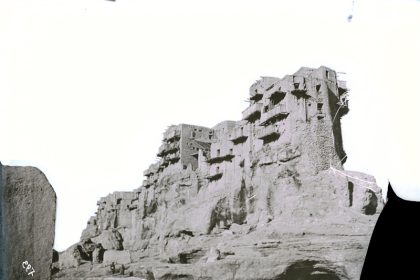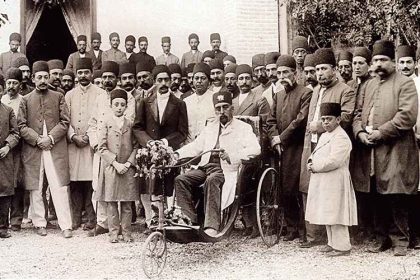From the 13th century (1300-1201), Iranians became more familiar with European culture, and this caused a huge change in the clothing of Iranians, especially women. The clothing of Iranian women during the Qajar era, which initially consisted of chadchur and veil, gradually changed and took on a new form. The change of clothing in Iran took place slowly under the shadow of clerics and opponents, but eventually important changes were made, which we will examine in this article from Sarak’s wardrobe and the reasons for opposing and agreeing to change the clothing during the Qajar period.
If you want to know who was against and in favor of changing the cover and how and when this change happened, stay with us.
Investigating opinions on the change of women’s clothing in the Qajar period
In the process of changing the cover, two main groups of supporters and opponents of the change of cover emerged; Traditionalists and Modernists. It should be noted that there were other groups apart from these two groups who believed in the results of the opinions and ideas of these two groups.
These two groups liked two distinct styles of dressing, and over the years, both styles underwent changes and were even adapted from the opposite group; But in general, the border of their difference and distinction remained bold. The modernists were people who saw Europe and favored modern clothing, and the traditionalists were mostly clerics and favored traditional clothing.
From the middle of the Qajar period, there were two approaches to clothing; First, the approach that was in favor of modernism and its supporters are people like Mirza Fath Ali Akhundzadeh (playwright and freedom fighter), Mirza Malkam Khan (known as Nazim al-Dawlah, journalist and politician) and Taj al-Sultaneh (daughter of Naser al-Din Shah, defender of the constitution, women’s rights and freedom and equality). They were.
The opposite approach was traditionalism, which wanted absolute tradition in clothing. People like Abdur Rahim Talebov (one of the pre-constitutional intellectuals) and Sheikh Fazlullah Nouri (opponent of the constitution and the founder of political Islam) were supporters of the traditionalist approach.
To get to know more about Fathali Akhundzadeh, we suggest you to examine the effect of Qajar women’s clothing on their social status.
Examining the opinions of the proponents of changing the clothing of Qajar women
Mirza Fethali Akhundzadeh went to Tbilisi at the age of 22; Tbilisi was close to Russia and the culture of its people was European; Living in such an atmosphere caused an intellectual transformation in him. He criticized the customs of Iranian clothing and wanted equal rights for men and women and openly criticized the hijab of women.
Mirza Agha Khan Kermani also had similar opinions to Akhundzadeh regarding the cover; Due to his presence in modernist circles during his stay in Turkey, he was influenced by the clothing of European youth, which included suits. Of course, it should be noted that his opinions were not only about the cover issue; Kermani believed that in all industries and sciences, Europeans should be set as an example and not under their colonialism, for example, he considered Iran’s dependence on European textiles as one of the factors of Iran’s economic weakness.
Kermani strongly criticized Arab customs and believed that women’s veils and heavy veils blocked the path of knowledge and spiritual vision, which is the eyes and ears. Taj al-Sultaneh believed that the constitution means freedom and one of the conditions for the realization of freedom was the removal of women’s veils, he believed that this was the reason for women’s withdrawal from society and turning to superstitions.

Examining the opinions of the opponents of changing the clothing of Qajar women
At the beginning of this section, it is necessary to mention that at this time some proponents of modernism were against the change of culture, especially the clothing of women. Talebov Tabrizi, who was one of the promoters of new political ideas in the era of constitutionalism, called this work a ridiculous imitation of the West and said that we should accept only its science and industry from any country and be Iranian everywhere and always.
He had lived in Tbilisi and was familiar with European customs and clothing, and he believed that any clothing is suitable for the geographical conditions of that region. By further examining Talebov’s words, we realize that his main concern for changing the coverage was economic concern; He was afraid of the economic dominance of the West, the spread of consumerism, and the emergence of class differences.
However, as we can see in his photos, he is not wearing the traditional clothes of the Iranians of that time, i.e. aba, shawl and hat. Rather, he is wearing a sardari and a short hat, which was itself adapted from European clothing.

In addition to Talebov, there were many other modernists who considered the change of clothing equivalent to leaving your religion and strongly opposed it. In general, the modernists had contradictory approaches when dealing with clothing, some of them believed that only science and technology should be adopted from Europe; A group also considered it necessary to adapt the western culture. On the other hand, the traditionalists were all of the same opinion against the adoption of the West and considered it to leave your religion and lead to unrestrainedness.
Sheikh Fazlullah Nouri was one of the most important opponents of the change of clothing; So that he started a gathering in the Artillery Square where they attacked anyone wearing a European hat. During the period of constitutionalism, many treatises were written under the title of Hijabiyyah Treatise, the content of all of which was against the change of women’s clothing, and the authors were all clerics.
Opposition to changing men’s clothing
The opposition to the change of clothing was not only in the field of women’s clothing; Many clerics were against changing men’s clothes. Because European clothes emphasized the shape of the body. For example, even after the European trouser suit became fashionable in some parts of society, there was still opposition to the European hat. until finally Reza Shah forced this change.
One of the things that caused the opposition of traditionalists was the new school uniforms and the change of students’ uniforms to uniforms similar to European school uniforms.

The reasons for opposing the change of clothing during the Qajar era
The interesting thing that was hidden in all these objections is that the majority of these criticisms were due to a result of changing women’s clothing in the public space.
In the midst of this, there were women who were trying to change. One of these women was Badraldji Rakhshan or Mehrtaj Rakhshan, one of the first Iranian students in America, who in her memoirs says about the difficulty of going to and from school despite the presence of a veil. Finally, he designs a dress for himself consisting of a long shirt and cape, the design of which was inspired by the daily clothes of European and American women.
When he returned to Iran, he was criticized many times for this dress, which he wore completely, and he was finally arrested.

In total, these oppositions gradually changed, as Ain al-Sultaneh writes in his memoirs about the changes in the shape and image of women in the streets of Tehran, especially during the reign of Mohammad Ali Shah and Ahmad Shah.
Changes of cover during the era of Naser al-Din Shah
During the Qajar era, not much practical change was seen in women’s clothing; During the Nasser period, Muslim women were still hidden in customary and religious frameworks, and even aristocratic women had no idea of European clothing. Among the women of the court, only Anis al-Dawlah and Amina Quds knew how different the image of Iranian women’s clothing is from European women’s clothing and how unusual it looks.
In history, we read that urban women were not allowed to travel without a veiled veil, but in the travelogues and memoirs of courtiers, we find out; This strictness did not exist for the women of the court and sometimes they appeared in meetings without a veil.
Naseruddin Shah’s first trip to Europe had a great impact on the change of women’s clothing and ultimately the prosperity of the clothing and fabric economy in Iran. After this trip, the custom of wearing short puffy skirts, which was called Shaliteh, became popular in the Naseri court, and gradually this custom spread from the elite classes to the lower classes of society.
Naser al-Din Shah liked these skirts from the dress form of ballet dancers in Europe and forced the women of his harem to use them. Wearing these short skirts would leave the legs bare, that’s why they used Chagchur to cover the legs in gatherings.
This happened in Iran at a time when in Europe the common dress of women consisted of long shirts whose skirts were puffed up by crinoline and were worn with a corset to make the waist look slimmer. For this reason, the story of Naseruddin Shah’s inspiration from the clothes of ballet dancers created a strange contradiction between the clothes of Iranian and European women, which resulted in the ugly and ugly clothes of Iranian women in the eyes of Europeans. Therefore, the short skirt was worn by Iranians for a short period of time, and over time it became longer until it was transformed into a long skirt at the end of the Qajar period.

It is clear that the opposition to the change of dress, especially the change of women’s dress, only slowed down the process of these changes, but finally, during the Naseri era, a huge change in the dress of Iranian women took place despite all the opposition.
The shape and image of the streets of Tehran changed from the end of the Qajar era due to the change in the clothing of women and Iranians, and gradually not only the clothing of the people but also the shops and streets of the city took a modern and European form.
In this article, we had a brief overview of what happened to Iranian clothing during the Qajar era and examined the changing process of clothing during this period. If you want to know more about this, read Maryam Omid’s article and her role in the fight against ignorance.
Source:
The book of clothing policies during the Qajar and Pahlavi period
RCO NEWS












